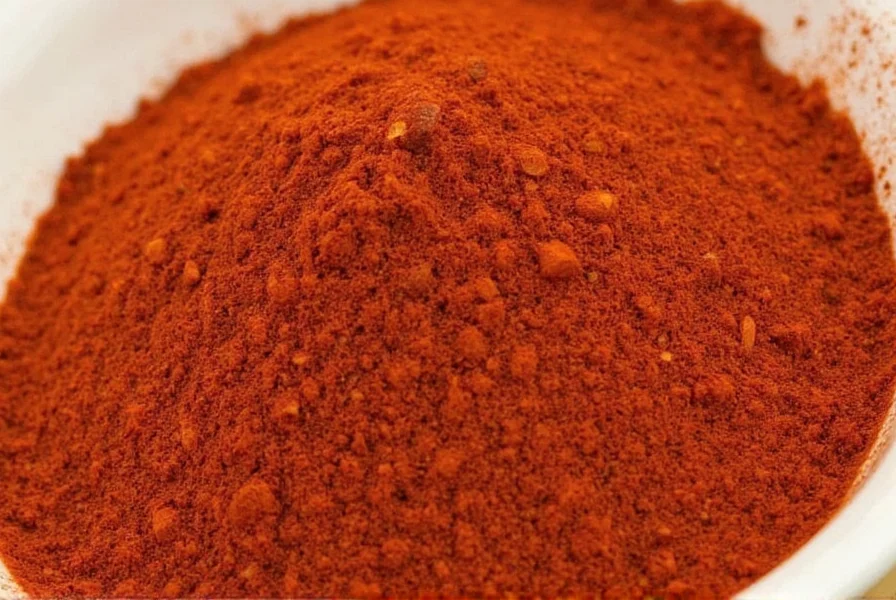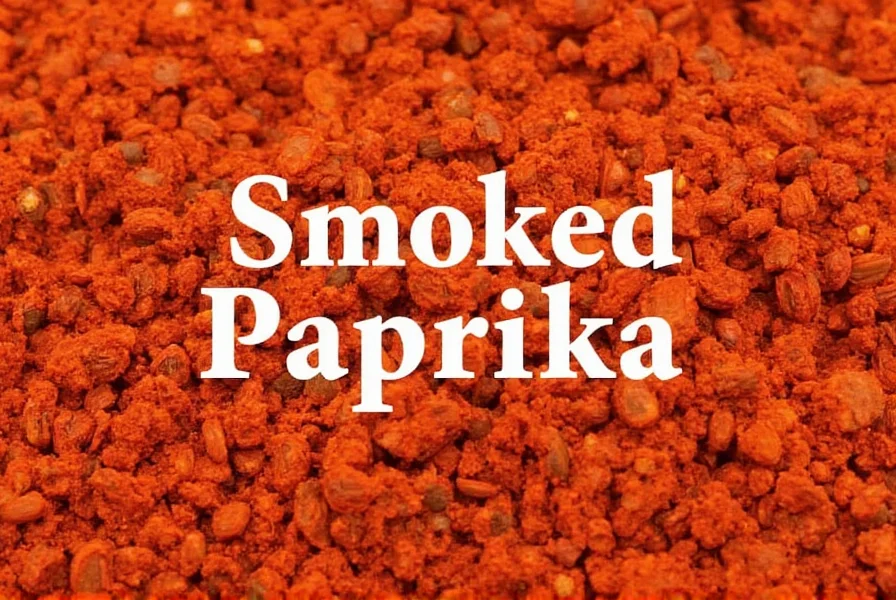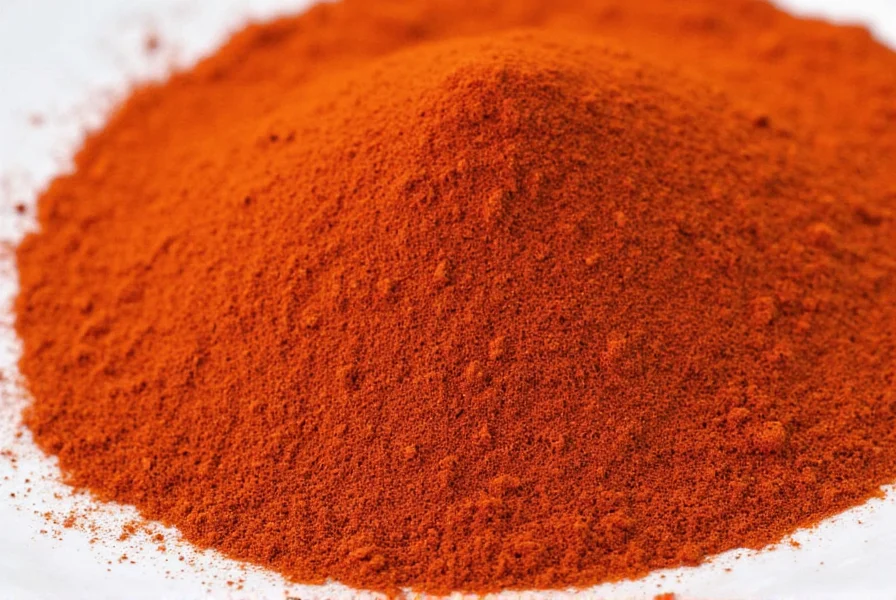When you reach for that jar of deep red spice in your pantry, you're accessing a culinary tradition that spans centuries. Smoked paprika, known as pimentón in Spain where it originated, transforms ordinary dishes into extraordinary culinary experiences through its unique production process and versatile flavor profile.
The Art of Making Smoked Paprika
Authentic smoked paprika begins with select varieties of sweet or hot peppers, typically grown in specific regions of Spain like La Vera. The distinctive smokiness comes from a traditional smoking process where peppers are slowly dried over oak wood fires for up to two weeks. This careful smoking technique preserves the peppers while infusing them with complex aromatic compounds that regular sun-dried paprika lacks.
The smoking duration directly impacts the final flavor intensity—longer smoking creates deeper, more pronounced smoky notes. After smoking, the peppers are ground into a fine powder, with the seeds sometimes removed to control heat levels. This artisanal process explains why high-quality smoked paprika often commands a premium price compared to standard paprika.
Understanding Smoked Paprika Varieties
Not all smoked paprika is created equal. Spanish producers categorize their smoked paprika based on heat level and flavor profile, creating distinct varieties that serve different culinary purposes:
| Variety | Heat Level | Flavor Profile | Best Culinary Uses |
|---|---|---|---|
| Pimentón Dulce | Mild (0-500 SHU) | Sweet, smoky, earthy | Paella, roasted vegetables, tomato sauces |
| Pimentón Agridulce | Moderate (500-1,500 SHU) | Balanced sweet-heat, complex smoke | Stews, braises, marinades |
| Pimentón Picante | Hot (1,500-8,000 SHU) | Spicy, intense smoke, peppery | Chorizo, spicy rubs, bold sauces |
Smoked Paprika vs Regular Paprika: Key Differences
While both spices come from ground peppers, the production methods create significant flavor distinctions. Regular paprika undergoes simple sun-drying, resulting in a one-dimensional sweet or spicy pepper flavor. Smoked paprika's wood-smoking process develops hundreds of additional flavor compounds, creating a multidimensional profile with smoky, earthy, and sometimes slightly sweet notes.
The visual difference is noticeable too—smoked paprika typically has a deeper, darker red hue compared to the brighter red of regular paprika. When substituting one for the other in recipes, expect significant flavor variations. A dish calling for smoked paprika will lack depth and complexity when made with regular paprika, though the reverse substitution (using smoked in place of regular) can work with careful measurement to avoid overpowering the dish.
Maximizing Flavor in Your Cooking
To fully harness smoked paprika's potential, understanding proper usage techniques is essential. Unlike many spices that benefit from early addition during cooking, smoked paprika's volatile aromatic compounds can diminish with prolonged heat exposure. For maximum flavor impact:
- Add smoked paprika toward the end of cooking for sauces and soups
- Bloom the spice in warm oil before incorporating into dishes
- Use in dry rubs for meats 30-60 minutes before cooking to allow flavor penetration
- Combine with complementary flavors like garlic, cumin, and citrus
Chefs specializing in Spanish cuisine emphasize that smoked paprika works best when balanced with other ingredients rather than dominating a dish. The spice shines in applications where its smokiness can enhance rather than overwhelm—think of the subtle background note in authentic paella rather than the primary flavor.
Proper Storage for Long-Lasting Freshness
Like all ground spices, smoked paprika gradually loses potency over time. To preserve its distinctive smoky flavor:
- Store in an airtight container away from light and heat
- Keep away from the stove or other heat sources
- Buy in small quantities you'll use within 6-12 months
- Consider refrigeration in humid climates
A simple freshness test: rub a small amount between your fingers and smell. Fresh smoked paprika should release an immediate, pronounced smoky aroma. If the scent is faint or musty, it's time to replace your supply. Properly stored, high-quality smoked paprika maintains optimal flavor for 1-2 years.

Smart Substitutions When Smoked Paprika Isn't Available
Ran out of smoked paprika mid-recipe? While no substitute perfectly replicates its unique flavor, these alternatives can work in a pinch:
- Regular paprika + 1/4 teaspoon liquid smoke per teaspoon of paprika
- Chipotle powder (use half amount due to increased heat)
- Combination of sweet paprika and smoked sea salt
- Smoked sea salt with a touch of cayenne for heat
For traditional Spanish dishes like paella or patatas bravas, authentic smoked paprika is difficult to replace without compromising authenticity. However, for general cooking applications, these alternatives can provide acceptable smoky notes when used judiciously.
Common Mistakes to Avoid
Even experienced cooks sometimes misuse smoked paprika. Watch out for these common pitfalls:
- Using excessive amounts that overwhelm other flavors
- Adding too early in the cooking process, causing flavor loss
- Substituting hot smoked paprika in recipes calling for sweet variety
- Storing in clear containers where light degrades quality
- Using old, stale paprika that lacks vibrant flavor
Remember that smoked paprika should enhance, not dominate, your dishes. Start with smaller amounts (1/4 to 1/2 teaspoon for most recipes) and adjust to taste. The goal is a subtle background note of smoke that complements other ingredients rather than announcing itself as the star of the dish.

Frequently Asked Questions
Is smoked paprika the same as regular paprika?
No, smoked paprika undergoes a traditional smoking process over oak wood fires that imparts distinctive smoky flavor notes absent in regular sun-dried paprika. The smoking process creates complex flavor compounds that transform both the taste and aroma profile significantly.
Can I substitute smoked paprika in recipes calling for regular paprika?
Yes, but use approximately half the amount since smoked paprika has a more intense flavor. Be aware this will add smoky notes that may alter the intended flavor profile, particularly in delicate dishes where regular paprika's milder flavor is essential.
What dishes work best with smoked paprika?
Smoked paprika excels in Spanish dishes like paella and patatas bravas, roasted vegetables, tomato-based sauces, bean dishes, grilled meats, and spice rubs. Its smoky notes particularly enhance foods that would naturally have grill or smoke flavors.
How can I tell if my smoked paprika has gone bad?
Fresh smoked paprika should have a vibrant red color and release an immediate smoky aroma when rubbed between fingers. If it has faded color, musty smell, or little aroma, it's lost potency. Properly stored, it maintains optimal flavor for 1-2 years.
What's the difference between sweet and hot smoked paprika?
Sweet smoked paprika (Pimentón Dulce) is made from sweet peppers with no heat, while hot smoked paprika (Pimentón Picante) uses spicier pepper varieties. The heat level in hot varieties ranges from moderately spicy to quite hot, so always check the label when purchasing to match your recipe requirements.











 浙公网安备
33010002000092号
浙公网安备
33010002000092号 浙B2-20120091-4
浙B2-20120091-4